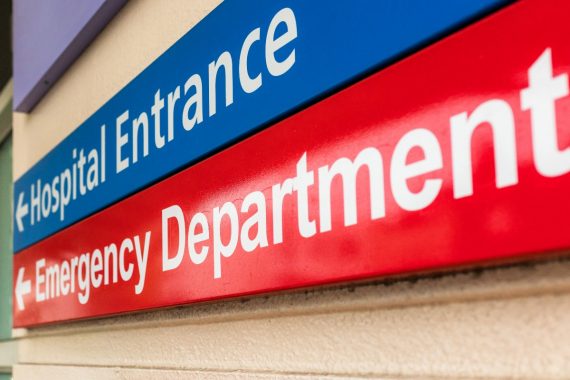Enhanced NHS 111 clinical input and reduced ambulance journeys to replace A&E target

The A&E four-hour target will be replaced by a new set of 10 indicators, including the proportion of 111 patients receiving ‘clinical input’ and measures to reduce unnecessary ambulance journeys, NHS England has said.
The NHS target in place since 2004 is to see 95% of A&E patients within four hours but this was last met in July 2015, with A&E departments suffering their worst four-hour wait performance on record in January last year.
A set of proposed new indicators were consulted on between December 2020 and February this year, following a clinical review of NHS access standards for urgent and emergency care.
NHS England today published a summary of responses to the consultation and its ‘next steps’, which said that responses ‘will be considered as part of an implementation plan’.
The document said that proposed new indicators would include:
- The ‘proportion of contacts via NHS 111 that receive clinical input’
- The reduction of ‘avoidable trips’ to emergency departments by 999 ambulances
- The percentage of patients receiving an ‘initial assessment’ within 15 minutes of arrival at A&E
- The percentage of patients spending more than 12 hours in A&E
However, there are currently no proposed targets but only areas to be measured – with the setting of the thresholds and implementation ‘subject to cross-Government agreement’, it added.
According to the document, the recommended new approach gained ‘majority support’ from consultation respondents, with the specific proposals endorsed by two thirds ( 67%) of respondents’.
It added: ‘Overall, 80% of respondents said that a bundle of measures would be more helpful than a single measure to understand how well an urgent and emergency care system is doing.’
Respondents ‘with a clinical background’ said that while the current four-hour standard ‘delivered improvements’, a focus on a single measure ‘can conflict with meeting the clinical needs of patients’, it said.
Consultation respondents also ‘welcomed’ the extension of the standards to include areas of activity outside of A&E and proposed further measures, including ‘treatment in alternative settings’, the document said.
However, these are not currently included because they ‘require further development’ or ‘due to the need to carefully balance all dimensions of the bundle’, it added.
Chair of the Academy of Medical Royal Colleges Professor Helen Stokes-Lampard said that the proposals are ‘long overdue’.
She added: ‘We now need to see all these new indicators fully adopted so that doctors and their teams are supported to deliver the right care at the right time and in the right setting.’
NHS England said the proposed measures reflect the ‘strengthening of NHS 111’ and ‘aim to improve patient flow to prevent crowding and ensure A&Es work more efficiently and effectively’.
Since December, patients in England are being asked to call 111 before attending A&Es – with 111 triaging them to the most appropriate service, including GP practices.
Shortly after the scheme’s launch – known as 111 First – GPs warned that acutely ill patients requiring emergency care are being diverted to their practice via the new call-before-you-walk A&E triage system.
Meanwhile, Pulse revealed this month that the NHS 111 Covid helpline is set to be stood down, with GPs working on the service set to be offered the chance to move to NHS 111.
Proposed areas for measurement:
- Response times for ambulances
- Reducing avoidable trips (conveyance rates) to Emergency Departments by 999 ambulances
- Proportion of contacts via NHS 111 that receive clinical input
- Percentage of Ambulance Handovers within 15 minutes
- Time to Initial Assessment – percentage within 15 minutes
- Average (mean) time in Department – non-admitted patients
- Average (mean) time in Department – admitted patients
- Clinically Ready to Proceed
- Percentage of patients spending more than 12 hours in A&E
- Critical Time Standards
Source: NHS England
Related Articles
READERS' COMMENTS [2]
Please note, only GPs are permitted to add comments to articles










be ready for the urgent paramedic requests for urgent visits instead of taking someone to hospital
I remember in A+E, at 3hrs 50mins, we’d just code the patient as “admitted” to the CDU (clinical decision unit) to bypass the 4hr target fine. And create an admission tariff. Nonsense game of fake data, for the school kids who impose it. Reminds me of smoking cessation advice and conjured BP targets.